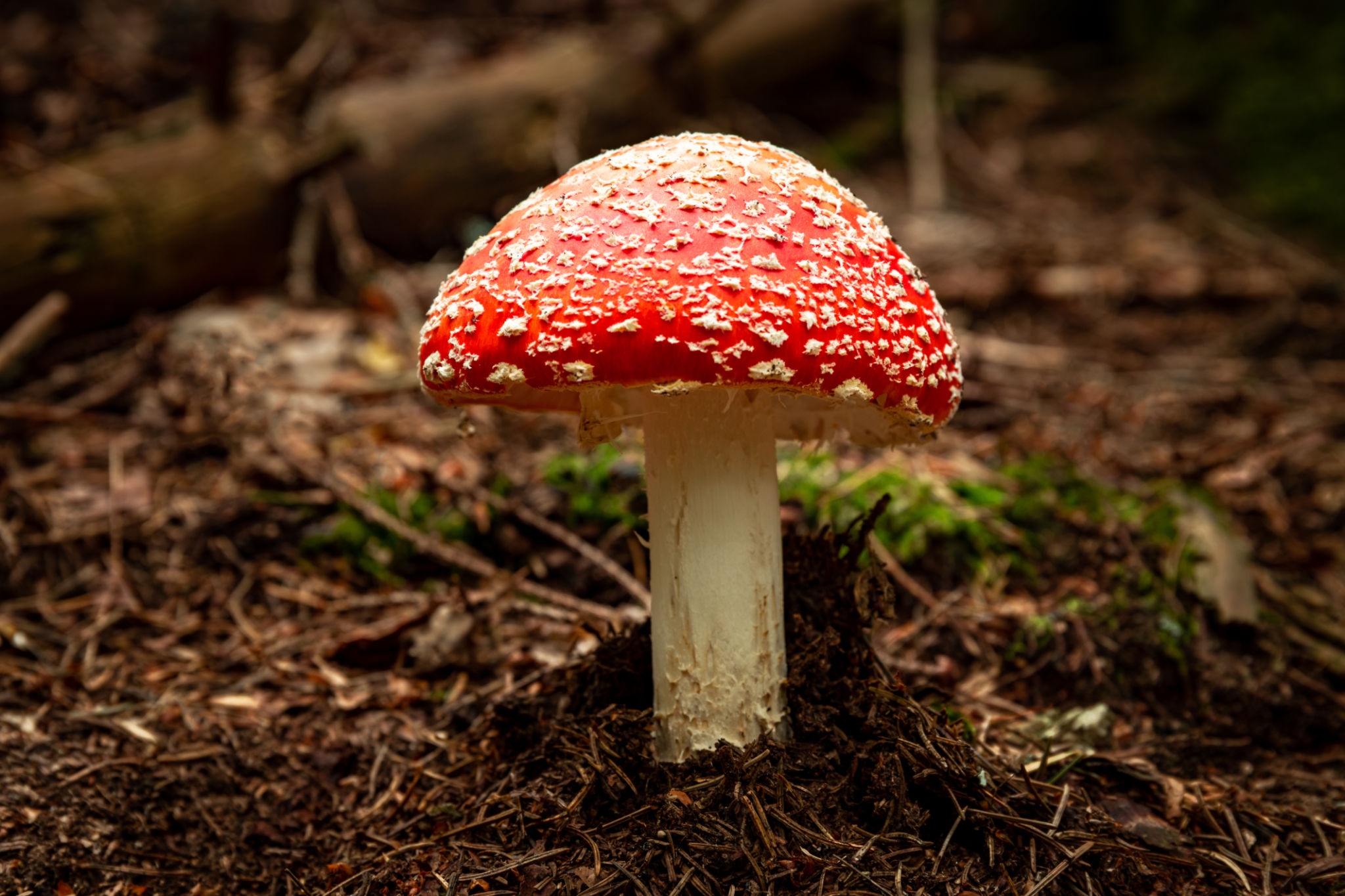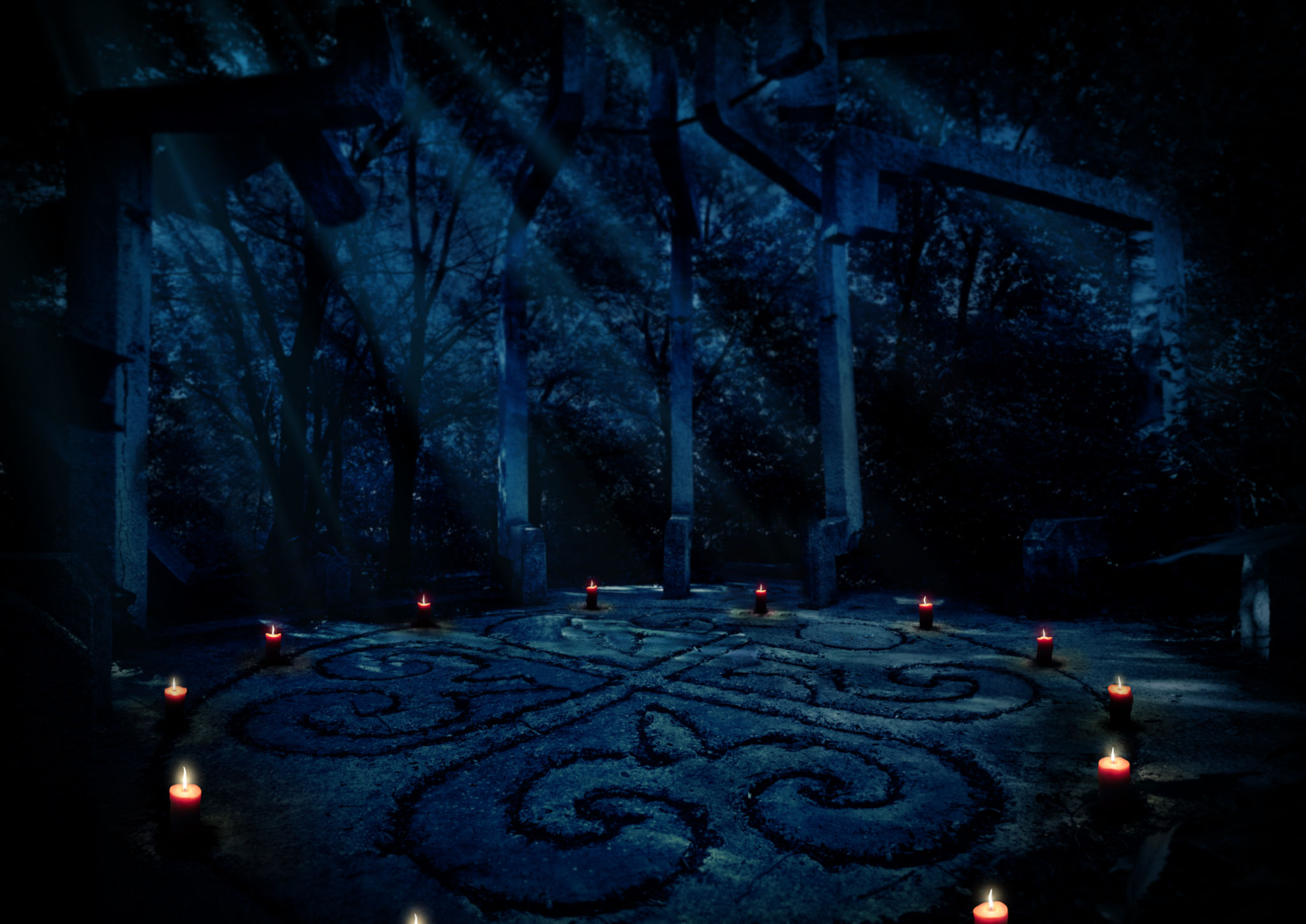Psilocybin, Henbane, and Seiðr: A Journey into the Mind-Altering Rituals of Ancient Germanic Spirituality
It's no secert that many cultures have levereged the use of sacred plant medicines to expand their consciousness and develop a closer connection to the Sacred. The question of whether ancient, pre-Christian Germanic tribes engaged with psilocybin mushrooms (or other psychoactive substances) in shamanic contexts is both intriguing and complex. While direct archaeological evidence remains scarce, a combination of historical records, ethnobotanical studies, and comparative analyses offers insights into the potential use of psychoactive fungi among these cultures.
Fungal Entheogens in Pre-Christian Europe

Amanita muscaria: The Fly Agaric Connection
The Fly Agaric mushroom (Amanita muscaria), recognizable by its red cap with white spots, has a well-documented history of use among various Eurasian shamanic traditions. In particular, the indigenous Sámi people of northern Scandinavia have been associated with its ritualistic use. Shamans would consume the mushroom or drink the urine of reindeer that had ingested it to induce altered states of consciousness, facilitating communication with the spirit world .
While the Sámi are distinct from Germanic tribes, their geographical proximity suggests potential cultural exchanges. However, direct evidence linking Amanita muscaria use to Germanic shamanic practices remains elusive.
Psilocybin Mushrooms: A Murkier History
The use of psilocybin-containing mushrooms in ancient Europe is less clearly documented. Some scholars suggest that certain prehistoric European cultures may have utilized these fungi in ritualistic contexts, but concrete evidence is limited .
In his book Psilocybin Mushrooms of the World, mycologist Paul Stamets discusses the historical use of psilocybin mushrooms across various cultures, including potential use in Europe. He notes that while there is ample evidence of psilocybin use in Mesoamerica, European traditions are less well-documented, possibly due to the suppression of such practices during the spread of Christianity.
Comparative Perspectives and Modern Interpretations
Insights from "The Awakening of Human Consciousness"
The YouTube video "The Awakening of Human Consciousness" by The Why Files explores the role of psychoactive substances in human spiritual development. It posits that the use of entheogens like psilocybin mushrooms may have played a significant role in the evolution of human consciousness, potentially influencing religious and cultural practices across various societies. While the video does not provide direct evidence of psilocybin use among Germanic tribes, it underscores the broader significance of psychoactive substances in human history.
Sami Shamanism and Spirituality
The YouTube video "Sami Shamanism & Spirituality" by Nordic Animism delves into the spiritual practices of the Sámi people, highlighting their use of Amanita muscaria in shamanic rituals. The video emphasizes the importance of these practices in Sámi culture and their potential influence on neighboring traditions. However, it also cautions against overgeneralizing or romanticizing these practices without concrete evidence.
Reflections from Renowned Mushroom Specialists
Paul Stamets
Paul Stamets, a prominent mycologist, has extensively studied the historical and cultural significance of mushrooms. He acknowledges the widespread use of psilocybin mushrooms in various cultures but notes the lack of concrete evidence for their use among ancient European tribes. Stamets suggests that the suppression of indigenous practices during the spread of Christianity may have led to the loss of such knowledge .

María Sabina
María Sabina, a Mazatec curandera from Mexico, played a pivotal role in introducing psilocybin mushrooms to the Western world. Her sacred mushroom ceremonies, known as veladas, were deeply rooted in indigenous spiritual practices. While her experiences are geographically and culturally distinct from those of ancient Germanic tribes, they highlight the profound spiritual significance that psilocybin mushrooms can hold within a cultural context .

Alan Watts
Philosopher Alan Watts explored the intersection of psychedelics and spirituality, advocating for the responsible use of substances like psilocybin to facilitate mystical experiences. While Watts did not specifically address ancient Germanic practices, his perspectives provide a framework for understanding how psychoactive substances can influence spiritual development .

The use of psychoactive substances among pre-Christian Germanic and Norse peoples, particularly during the Viking Age, is a subject of ongoing scholarly exploration. While direct evidence remains limited, archaeological findings and historical accounts suggest that certain plants and fungi with psychoactive properties were known and possibly utilized in ritualistic or shamanic contexts.
Henbane (Hyoscyamus niger) and the Berserker Phenomenon

One of the most compelling pieces of evidence comes from the discovery of henbane seeds in a Viking grave near Fyrkat, Denmark. Henbane contains scopolamine and hyoscyamine, compounds known to induce hallucinations, delirium, and a sensation of flight. These effects align with descriptions of the berserkers—Norse warriors who entered trance-like, frenzied states during battle. Ethnobotanist Karsten Fatur posits that henbane, rather than the traditionally cited Amanita muscaria mushroom, may have been responsible for inducing the berserker state, given its more consistent association with aggression and rage .
Cannabis in Ritual Contexts

Cannabis sativa seeds have been found in several Viking-age sites, including the Oseberg ship burial. While hemp was commonly used for textiles and rope, the presence of seeds in burial contexts suggests potential ritualistic or medicinal applications. In the Oseberg burial, the seeds were found in a small pouch, possibly indicating their use in religious or healing practices.
Seiðr and Shamanic Practices

Seiðr was a form of Norse magic associated with prophecy and altering fate, often practiced by women known as vǫlur. While the exact methods of inducing the trance states required for seiðr are not fully documented, the use of psychoactive substances like henbane or cannabis remains a plausible component, given their known effects and archaeological presence .
So Did The Ancient Germanic Tribes Use Psychoactive Substances To Access The Spirit World?
While the evidence is fragmentary, tantalizing clues suggest that the pre-Christian Germanic peoples may have used mind-altering plants and fungi as part of their spiritual and shamanic practices.
Seiðr: The Shamanic Heart of Norse Magic
Seiðr (pronounced sayth-er) is a Norse magical practice associated with prophecy, fate-weaving, healing, and cursing. Often performed by women known as völur, Seiðr involved chanting (galdr), rhythmic drumming, dancing, and trance induction. The sagas describe völur seated on high platforms (seiðhjallr), entering altered states to communicate with spirits or glimpse the threads of fate.
While the sagas do not explicitly describe the use of psychoactive substances in Seiðr, scholars such as Karsten Fatur have proposed that plants like henbane (Hyoscyamus niger) may have been used to induce trance states. Henbane seeds have been found in Viking graves, such as the Fyrkat burial in Denmark, suggesting ritual significance. Henbane's psychoactive compounds, scopolamine and hyoscyamine, can induce hallucinations, delirium, and sensations of flight—effects that align with the ecstatic states described in Seiðr.
Seiðr's connection to shamanism is further supported by comparative studies with Siberian and Sámi shamanic practices, where the use of psychoactive plants to enter the spirit world is well-documented. The völur, like shamans elsewhere, acted as mediators between worlds, weaving wyrd through their words and actions.
Soðsago: The Saxon Echo of Seiðr
In Old Saxon culture, the term soðsago (“Soothsayer” or “threadsayer” and pronounced “sooth-say-yo.”) appears in the Heliand, an epic poem retelling the Christian Gospels in a Germanic style. While on the surface, soðsago refers to truthful speech, its roots lie in the Germanic tradition of sacred utterance: soð (truth) + saga (saying, story). This concept points to a tradition of seeresses, wise women, or ritual specialists who spoke truths that shaped reality—echoes of the völur and their Seiðr.
Though Christian scribes likely sanitized the Heliand's language, the survival of soðsago suggests that the power of sacred speech—perhaps once enhanced by trance-inducing substances—remained a recognized concept. The link between soðsago and Seiðr hints at a shared Germanic spiritual framework where words, whether sung, chanted, or whispered, carried the power to influence fate.
Conclusion: A Hidden Thread in the Tapestry of Germanic Spirituality
While definitive proof remains elusive, the convergence of archaeological findings, linguistic clues, and comparative anthropology points to a plausible, though largely forgotten, tradition of psychoactive plant use among pre-Christian Germanic peoples. Seiðr, soðsago, and the artifacts left in graves hint at a worldview where altered states of consciousness were a means to access the Sacred, to speak truth into being, and to weave the threads of Wyrd.
As modern seekers and scholars revisit these ancient traditions, a deeper understanding of the spiritual technologies of the Germanic tribes—including their potential use of plant medicine—offers a richer, more nuanced picture of their spiritual lives. Whether through the völur's galdr, the Saxon soðsago, or the berserker's fury, the echoes of a psychedelic past still resonate in the myths and memories of our ancestors.

Sources & Further Reading:
- Fatur, Karsten. Ritual Use of Henbane in Viking Age Scandinavia. Journal of Ethnopharmacology, 2019.
- Heliand: The Old Saxon Gospel.
- Nordic Animism, Sami Shamanism & Spirituality (YouTube).
- The Why Files, The Awakening of Human Consciousness (YouTube).
- Stamets, Paul. Mycelium Running: How Mushrooms Can Help Save the World.
- Alan Watts, The Joyous Cosmology: Adventures in the Chemistry of Consciousness.
- Maria Sabina, as referenced in Sacred Mushroom Rituals.